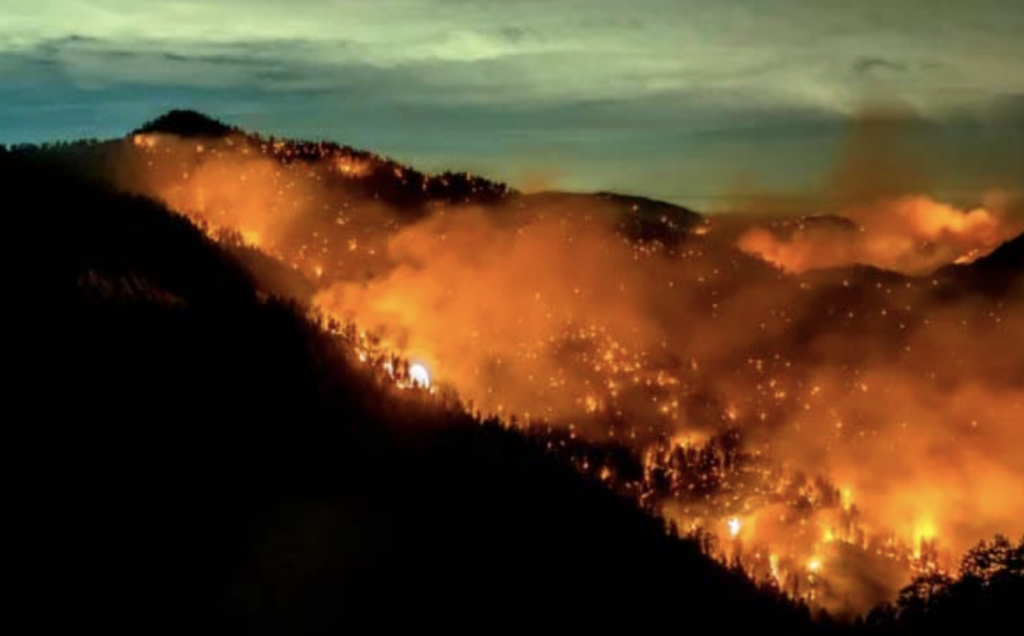Conservative pundits who tout land management as the main issue fail to see the big picture
Scientific American
October 29, 2020

By Rebecca Miller, Katharine Mach, and Chris Field
AS THE TOLL FROM CALIFORNIA’S WILDFIRES GROWS HIGHER YEAR AFTER YEAR, the state’s future appears fiery and hazy with smoke. For conservative columnists like Ben Shapiro, Niall Ferguson and Tyler O’Neil, it’s clear who is responsible: California Democrats. In recent opinion pieces, they acknowledge that climate change might play a role in these fires, but they blame Democratic leadership for exacerbating fuel buildups through poor land management. As proof, they reference a study from early this year in Nature Sustainability.
We wrote that study. These columnists are wrong.
Their opinion pieces represent a dangerous form of climate denialism, one that recognizes the value of climate adaptation—adapting to life under a changing climate—but purposefully misdirects by refusing to acknowledge the critical importance of limiting the amount of future climate change.
The science is clear. Climate change plays an undeniable role in the unprecedented wildfires of recent years. More than half of the acres burned each year in the western United States can be attributed to climate change. The number of dry, warm, and windy autumn days—perfect wildfire weather—in California has more than doubled since the 1980s.
Without aggressive reduction of greenhouse gasses, forests in Northern California, Oregon and Washington could experience an increase of more than 78 percent in area burned by 2050. Governor Gavin Newsom correctly characterized recent wildfires as a “climate damn emergency.” It’s almost unfathomable to imagine a situation in which the 2020 wildfire season becomes a regular occurrence or even a mild year, but that’s exactly what could happen in our future.
The science is clear. Climate change plays an undeniable role in the unprecedented wildfires of recent years. More than half of the acres burned each year in the western United States can be attributed to climate change. The number of dry, warm, windy autumn days — perfect wildfire weather — has more than doubled since the 1980s.
We must dramatically reduce our greenhouse gas emissions. Otherwise, in a few decades, we might recall the more than four million acres of California burned so far this year—that have already shattered the prior record, set in 2018—as a relatively light wildfire season. That prospect, rooted in science and devastating to life and property, is unacceptable.
But we must also prepare for reality with strong measures to reduce our already heightened and increasing risk. Resilience will require a broad portfolio of actions, from the household to the federal level, from emergency preparedness to disaster-resistant building codes. For wildfires, fuel treatments like prescribed burns have become a salient example.
We must prepare with strong measures to reduce our already heightened... risk. Resilience will require a broad portfolio of actions, from the household to the federal level, from emergency preparedness to disaster-resistant building codes.
Fuel treatments reduce the buildup of vegetation that has resulted from nearly a century of fire suppression and from the criminalization of traditional Indigenous controlled burning. Twenty million acres of forests across California could now benefit from fuel treatments like prescribed burns, purposely-set fires intended to reduce fuel overgrowth. However, inadequate funding, limited prescribed burn crews, and dangerous weather conditions remain barriers to conducting prescribed burns.
As the owner of 57 percent of forests in California, the federal government has an enormous role to play. The U.S. Forest Service aspires to treat 500,000 acres per year, but is unlikely to reach that target given limited funding from Congress. However, new legislation could help: a new bill from Ron Wyden (D–Ore.) could guarantee $600 million each year for prescribed burns across federal, state and private lands.
Meanwhile, legislators in Sacramento have passed dozens of bills to address wildfire risk in the last few years, including six new laws on prescribed burns. These laws and recent executive actions address several of the barriers we found in our study, including the need for liability protection and programs for training and public education. Last year, Governor Newsom also declared a state of emergency to fast-track 35 fuel-reduction projects that would protect 200 at-risk communities.
But fuel treatments alone are not the solution; we cannot disregard that our contributions to climate change continue to aggravate our risk. Reducing greenhouse gas emissions is an essential part of protecting our communities and ecosystems in the future. By exclusively focusing on fuel treatments, these conservative columnists ignore the ongoing influence of climate change and politicize critical action for fuel treatments that protect our communities and ecosystems.
Fuel treatments alone are not the solution.We cannot disregard that our contributions to climate change continue to aggravate our risk. Reducing greenhouse gas emissions is an essential part of protecting our communities and ecosystems in the future.
In the September 29 debate, two years after recommending that Californians rake the forest, President Trump deflected on commenting on the role of climate change in recent wildfires. Instead, he told us, “Every year I get the call: ‘California is burning! California is burning!” If that was cleaned, if you had good forest management, you wouldn’t be getting those calls.”
Ignoring climate change won’t prevent climate disasters. From California wildfires to Gulf Coast floods, we already experience their effects. Arguments that purposefully misconstrue the impacts of climate change on our ecosystems and communities increase our peril.